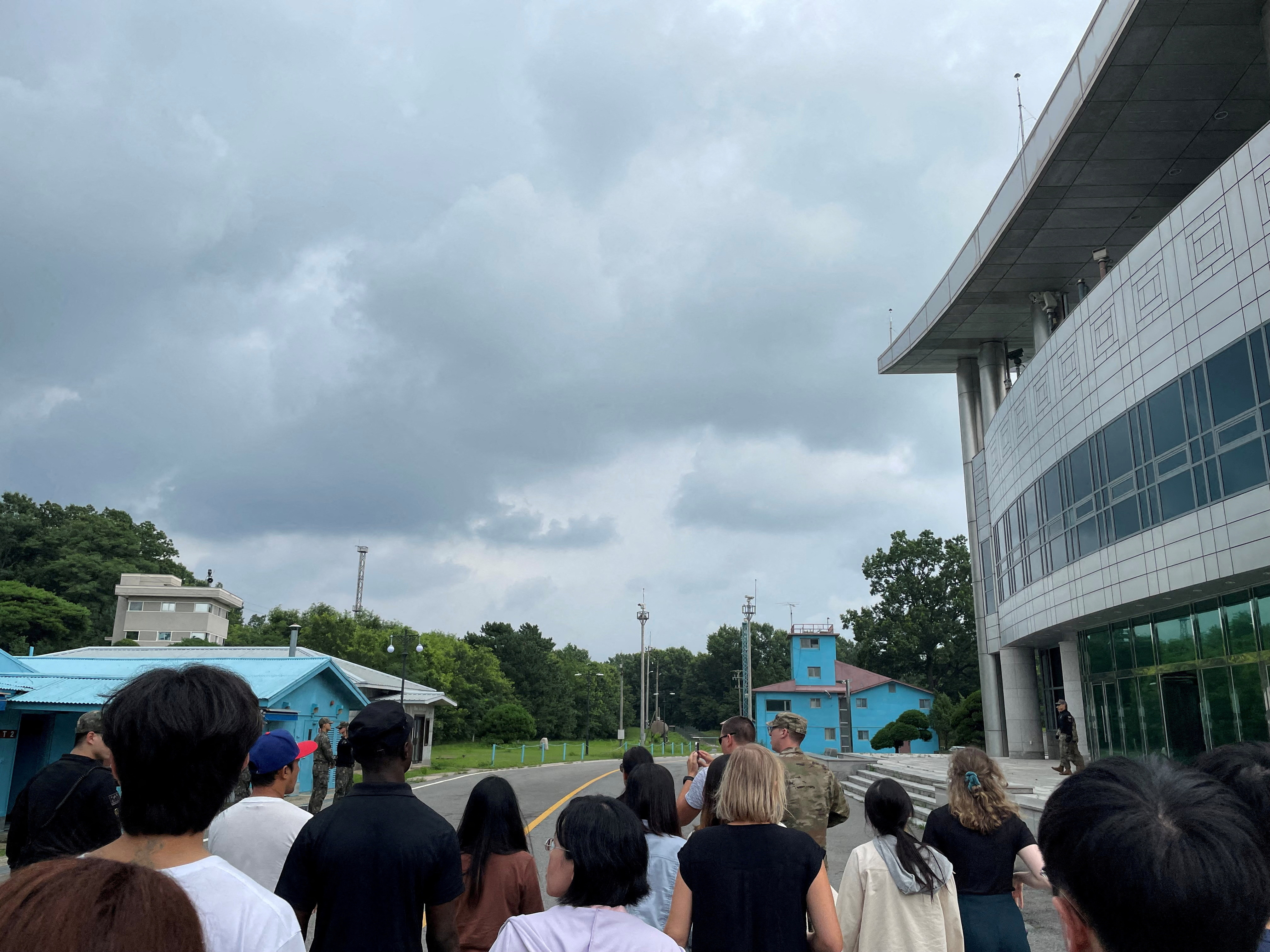A JSA Orientation Tour is an educational walkthrough. It introduces participants to Job Safety Analysis procedures in a work environment.
Engaging in a JSA Orientation Tour is essential for employees who wish to grasp the fundamentals of workplace safety and hazard identification. It establishes a foundation of understanding regarding how each job step can be analyzed to prevent accidents and maintain health and safety standards.
The tour offers insight into the systematic process of breaking down a job into its tasks, identifying potential risks, and implementing control measures. Participants learn to foresee and manage possible dangers, fostering a safety culture within their organization. By prioritizing safety through these orientation tours, businesses aim to reduce workplace incidents, ensuring a secure and productive environment for their workers.

Credit: www.capitalregionboces.org
Introduction To JSA Orientation Tours
Welcome to the essential walkthrough of Job Safety Analysis (JSA) Orientation Tours! Before stepping into any workspace, workers need a strong understanding of the safety protocols associated with their jobs. JSA Orientation Tours play a pivotal role in this initial learning curve. Let’s delve deep into what wLet’sSA truly means, its critical importance in the workforce, and how it stands apart from regular safety briefings.
Defining JSA (Job Safety Analysis) Orientation Tour
Defining JSA (Job Safety Analysis) Orientation Tour
A JSA Orientation Tour is an instructional journey through a workplace. During the tour, each job task is analyzed to identify potential hazards. The goal is to equip workers with the knowledge to prevent accidents
View this post on Instagram
before they occur.
The Importance of JSA in Promoting Workplace Safety
The Importance Of JSA in Promoting Workplace Safety
Participating in JSA Orientation Tours dramatically increases safety awareness. Such tours prepare workers for real-world scenarios, emphasizing the following:
- Hazard Recognition: Spot dangers in advance.
- Risk Mitigation: Apply strategies to lessen risks.
- Emergency Procedures: Learn quick and correct responses.
How JSA Orientation Tours Differ from Regular Safety Briefings
How JSA Orientation Tours Differ From Regular Safety Briefings
While regular safety briefings offer crucial information, JSA Orientation Tours are more interactive and task-specific. The key differences include:
| JSA Orientation Tours | Regular Safety Briefings |
|---|---|
| Active participation in real settings | Often, passive learning in a classroom |
| Detailed focus on individual tasks | Broad overviews of safety protocols |
| Immediate Q&A opportunities | General Q&A sessions |
“` This HTML content is tailored to engage website visitors by breaking down the information about Job Safety Analysis Orientations into digestible, easy-to-understand sections, ideal for SEO and user experience.
Steps Involved In Conducting A JSA Orientation Tour
A practical job safety analysis (JSA) orientation tour is a deep dive into potential job or work environment hazards. The process involves a sequence of critical steps carefully designed to enhance workplace safety. Let’s unwrap this essenLet’stoolbox through its significant phases.
Pre-tour Preparation And Hazard Assessment
Before stepping onto the job site, solid groundwork lays the cornerstone for a successful JSA Orientation Tour. This phase concentrates on gathering pertinent data:
- Review past incident reports to identify recurring issues.
- Compile a list of tasks and processes for scrutiny.
- Ensure all relevant safety gear is on hand and ready.
With this preparatory work done, the team gears up for an informed examination of the job site.
In-depth Walkthrough Of The Job Site
The physical inspection is a critical stage where the team visually and physically inspects the area. It involves:
- Visiting different zones within the site allotted for varied tasks.
- Understanding the flow of operations by observing active work.
- Noting circumstances that could affect safety measures in place.
Identification And Analysis Of Potential Risks
The goal here is to spot what could go wrong. This involves:
- Spotting hazards inherent in job tasks.
- Assessing the likelihood and severity of potential risks.
- Determining preventative measures to mitigate these risks.
With each hazard pinpointed, the team collaborates to formulate strategies to keep the workplace safe.
Key Components Of A Successful JSA Orientation
A Job Safety Analysis (JSA) Orientation is crucial for a safe work environment. It guides employees through potential hazards. A few core parts make an orientation successful. We will look into each one.
Employee Engagement And Interactive Learning
Teams work best when everyone takes part. JSAs are more effective with this approach. Here are ways to keep staff involved:
- Use real-life scenarios to connect with workers.
- Games and quizzes make learning fun.
- Have employees perform mock JSAs for practice.
Expert Facilitation And Communication
Knowledgeable leaders are essential. They should communicate clearly. Here’s how they can provide clear explanations of each hazard.
- Discuss the why behind each safety rule.
- Use both verbal and visual aids to teach.
Risk Mitigation Strategies And Safety Protocols
Everyone must understand how to reduce risks. Safety protocols are the backbone of this understanding. These points are essential to cover:
| Hazard | Mitigation Strategy | Protocol |
|---|---|---|
| Slips and Falls | Use of anti-slip footwear | Regular floor inspections |
| Chemical Exposure | Proper handling procedures | Wearing protective equipment |
| Equipment Hazards | Regular maintenance checks | Emergency shut-off procedures |

Credit: www.reuters.com
Post-jsa Orientation: Ensuring Compliance And Monitoring
Completing a Job Safety Analysis (JSA) Orientation is a critical first step. Yet, the real test lies in what follows. Ensuring that the principles and practices highlighted during orientation translate into long-term compliance and diligent monitoring is vital for a safe work environment. Let’s explore strategieLet’st will help maintain and continuously improve workplace safety standards.
Regular Safety Audits And Continuous Improvement
Post-JSA Orientation, regular safety audits are a must. They help identify potential hazards before they cause harm. These audits encourage a culture of safety and accountability. Here are the critical elements of effective safety audits:
- Consistency: Conduct audits regularly to maintain safety standards.
- Detailed Inspection: Examine all workplace areas to detect deviations from the JSA guidelines.
- Action Plan: Develop a plan for addressing identified issues promptly.
- Employee Involvement: Engage employees in the audit process for better insights.
Training Follow-ups And Reinforcement Tactics
Training doesn’t end with the order session. Follow-up and reinforcement are essential to instilling safety practices. Here’s how to keep the Here’sng alive:
- Create a schedule for short refresher sessions.
- Use quizzes and engaging activities to reinforce knowledge.
- Encourage hands-on practice to solidify procedures.
- Gather feedback to tailor future training sessions.
Documentation And Legal Compliance
Documentation serves as the backbone for legal compliance. It’s crucial to keep accurate records that reflect adherence to safety standards. Consider the following documentation practices:
| Documentation | Importance |
|---|---|
| JSA Reports | This shows that hazards were identified and solutions were implemented. |
| Training Records | Verifies that employees received proper orientation and ongoing training. |
| Audit Logs | Provides a history of safety inspections and corrective actions. |
Ensure that all documentation is readily accessible and updated regularly. This documentation is your proof of commitment to safety and will be invaluable in case of legal scrutiny.
Case Studies And Best Practices
A practical Job Safety Analysis (JSA) Orientation Tour is a proactive step in ensuring a safe workspace. This hands-on approach helps employees understand potential hazards. Studying real case studies and best practices can provide insights into creating successful JSA Orientations tailored to specific industries.
Evaluating Real-world JSA Orientation Success Stories
Success stories from various companies reveal the impact of well-executed JSA Orientations. Key elements include:
- Engagement: Interactive tours lead to better understanding.
- Customization: Addressing specific industry needs is crucial.
- Follow-up: Regular revisions ensure ongoing relevance.
Companies like ABC Construction saw a 75% reduction in accidents after implementing JSA orientation. Metrics like these validate the approach.
Common Pitfalls And How To Avoid Them
Identifying and avoiding pitfalls is vital. Common issues include:
- Insufficient hazard communication. Detail is critical.
- Lack of engagement. Interactive content enhances retention.
- Poor timing. Schedule orientations when team focus is optimal.
The table below illustrates recommended actions to counter these pitfalls:
| Pitfall | Recommended Action |
|---|---|
| Insufficient Hazard Communication | Enhance detail in JSA materials |
| Lack of Engagement | Include interactive training modules |
| Poor Timing of Orientation | Schedule during low-operation periods |
Adapting JSA Orientation Tours To Various Industries
Customizing JSA Orientations to fit different industries is vital. Best practices suggest:
- Identifying industry-specific risks.
- Creating targeted safety scenarios.
- Regularly updating content based on evolving workplace conditions.
Example: A tech company might focus on ergonomic hazards, while a chemical plant highlights spill response.
Future Of JSA Orientation Tours
As industries continue to adapt, JSA (Job Safety Analysis) Orientation Tours are no mere afterthought. These interactive sessions aim to educate employees on potential job hazards and preventive measures. The future of JSA Orientation Tours lies in smartly embracing advancements to enhance workplace safety further. Let’s explore what liesLet’sd for these crucial training experiences.
Incorporating Technology And Digital Tools
The digital era beckons a shift in how we approach safety orientations. Virtual Reality (VR) and Augmented Reality (AR) are not just buzzwords; they represent a transformative step for JSA Orientations. Imagine employees wearing VR headsets, navigating virtual workspaces, identifying hazards, and practicing safety protocols. Such immersive experiences commit safety procedures to memory more effectively than traditional methods.
Mobile apps now bring JSA checklists and reports to workers’ fingertips, offering convenience and real-time updates. Interactive elements, including quizzes and gamification, turn learning into an engaging, competitive activity that workers look forward to.
Evolving Compliance Regulations And Global Standards
Safety regulations are not static; they evolve with time and technology. Globally, standards set by organizations like OSHA and ISO undergo regular updates. JSA Orientations must keep pace with these changes. Digital libraries and e-learning platforms make staying updated less daunting. They provide easy access to the latest safety protocols, ensuring that every orientation session is current.
Enhancing Safety Culture Through Innovative JSA Orientations
Instilling a solid safety culture goes beyond mere compliance; it’s about building an environment where safety is a shared value. Future JSA Orientation Tours will harness storytelling and scenario-based learning to achieve this. They are engaging stories that resonate with workers’ experiences and concerns. Scenario-based tours tap into decision-making skills, helping employees think and act proactively in the face of hazards.
As safety culture strengthens, we’ll see more peer-led conversations. This approach leverages the team’s experience and fosters a sense of accountability among peers.

Credit: onlinelibrary.wiley.com
Frequently Asked Questions Of What Is A JSA Orientation Tour
What Is the JSA Tour?
A JSA (Joint Security Area) tour offers a guided visit to the only portion of the Korean Demilitarized Zone where North and South Korean forces stand face-to-face.
Why Are JSA Tours Not Available?
JSA tours may be unavailable due to political tensions, security concerns, or operational issues at the Joint Security Area. Access can also vary with official regulations.
Can Tourists Visit The JSA?
Yes, tourists can visit the Joint Security Area (JSA) through approved guided tours, which provide a unique opportunity to experience this heavily guarded region.
Can Tourists Visit The DMZ in South Korea?
Yes, tourists can visit the DMZ in South Korea through guided tours, as independent access is restricted for safety and security reasons.
Conclusion
Navigating the realm of job safety analysis (JSA) can be complex. Our exploration of JSA orientation tours has demystified their purpose and process. These tours lay the groundwork for a proactive safety culture by prioritizing employee safety and legal compliance.
Investing in such orientations is not just a best practice; it’s a strategic move fit’sny safety-conscious organization. Embrace these tours and foster a safer workplace for all.

